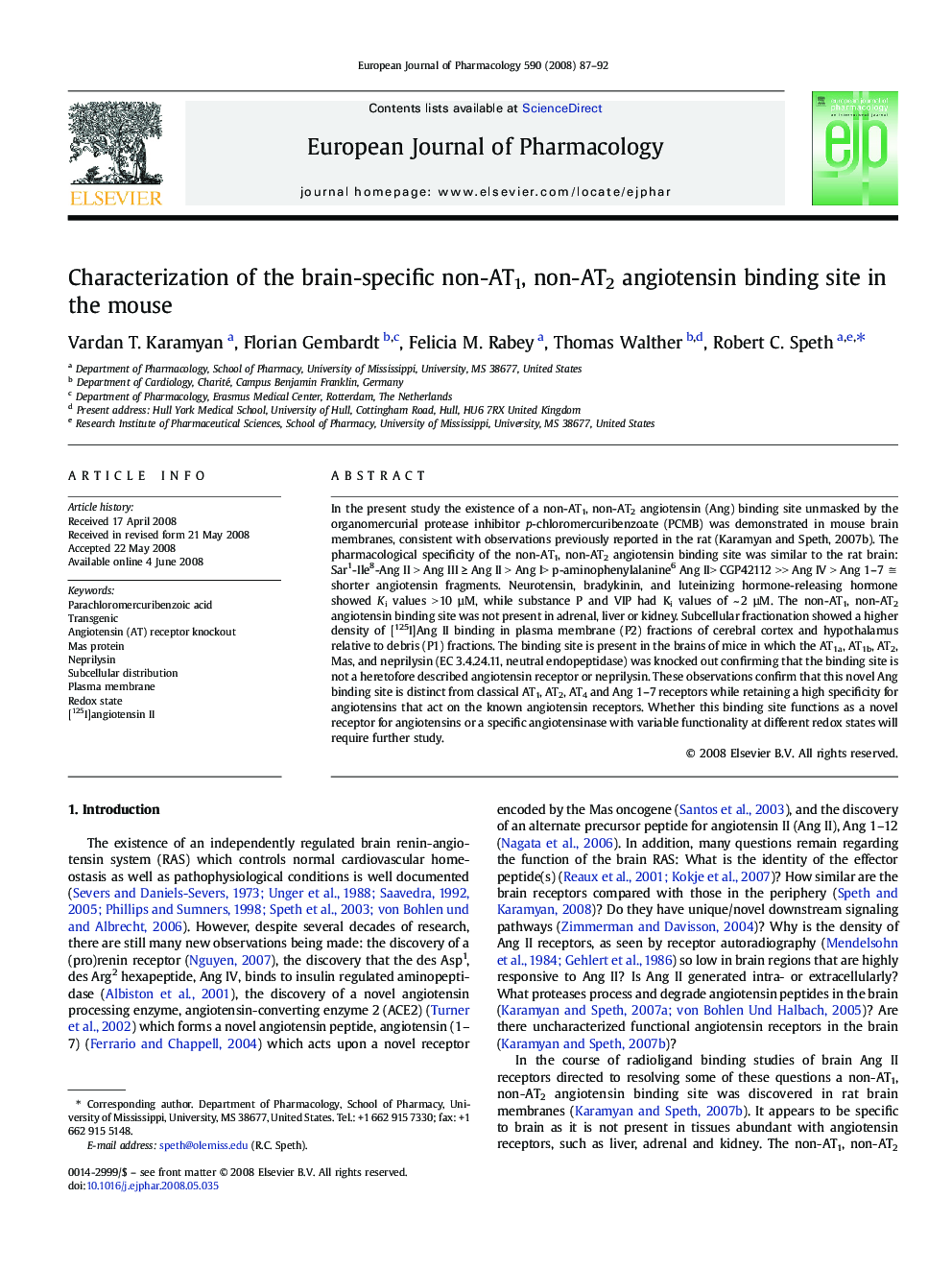| Article ID | Journal | Published Year | Pages | File Type |
|---|---|---|---|---|
| 2534928 | European Journal of Pharmacology | 2008 | 6 Pages |
In the present study the existence of a non-AT1, non-AT2 angiotensin (Ang) binding site unmasked by the organomercurial protease inhibitor p-chloromercuribenzoate (PCMB) was demonstrated in mouse brain membranes, consistent with observations previously reported in the rat (Karamyan and Speth, 2007b). The pharmacological specificity of the non-AT1, non-AT2 angiotensin binding site was similar to the rat brain: Sar1-Ile8-Ang II > Ang III ≥ Ang II > Ang I> p-aminophenylalanine6 Ang II> CGP42112 >> Ang IV > Ang 1–7 ≅ shorter angiotensin fragments. Neurotensin, bradykinin, and luteinizing hormone-releasing hormone showed Ki values > 10 µM, while substance P and VIP had Ki values of ~ 2 µM. The non-AT1, non-AT2 angiotensin binding site was not present in adrenal, liver or kidney. Subcellular fractionation showed a higher density of [125I]Ang II binding in plasma membrane (P2) fractions of cerebral cortex and hypothalamus relative to debris (P1) fractions. The binding site is present in the brains of mice in which the AT1a, AT1b, AT2, Mas, and neprilysin (EC 3.4.24.11, neutral endopeptidase) was knocked out confirming that the binding site is not a heretofore described angiotensin receptor or neprilysin. These observations confirm that this novel Ang binding site is distinct from classical AT1, AT2, AT4 and Ang 1–7 receptors while retaining a high specificity for angiotensins that act on the known angiotensin receptors. Whether this binding site functions as a novel receptor for angiotensins or a specific angiotensinase with variable functionality at different redox states will require further study.
